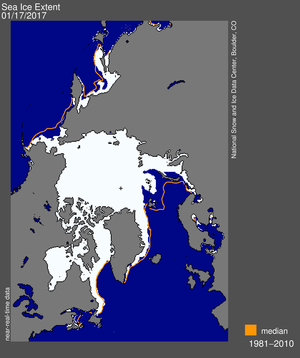Research
The Cryomics Lab at the Centre for Earth Observation Sciences at the University of Manitoba uses field work, molecular biology, and bioinformatics to study the evolution of microorganisms in ice and ice-associated environments. We have several ongoing projects in these areas:
- Seasonal Synergy between Bacterial Osmoprotection and Algal Production in Sea Ice
This research project is sponsored by National Science Foundation Award #1203262, and follows up on research I conducted in the laboratory of Dr. Jody Deming in the School of Oceanography at the University of Washington in Seattle. - Parasitic Fungi in Arctic Sea Ice
This NSF-funded project aims to elucidate the role of fungi in Arctic marine environments. - hima: A Meta-database of Low Temperature Genomes and Metagenomes
- ddmp: Digital Database of Microbial Phenotypes
- Lateral gene transfer at subzero temperatures
During the Circumpolar Flaw Lead Systems Study I measured the abundances of various biological and physical parameters that might influence the frequency of lateral gene transfer in newly formed sea ice. I performed experiments on a model psychrophile, Colwellia psychrerythraea strain 34H, with the goal of determining its potential for natural transformation under environmentally relevant conditions. - Microbial persistence over an Arctic winter season
I investigated the abundances of microorganisms, particles, and particulate extracellular polymeric substances (pEPS) in Arctic winter sea ice during the Canadian Arctic Shelf Exchange study. Although a significant decline in microorganism abundance was observed in the coldest ice, there was also significant production of pEPS in all of the ice measured, indicating microbial adaptation to this extremely cold and salty environment. The diversity of Bacterial and Archaeal communities in winter sea ice were also examined and a variety of microorganisms from multiple environments were found to persist through the season, though no changes were observed in the structure of either community.
- Arctic Marine Biodiversity Observing Network
This collaborative project aims to implement a monitoring network from microbes to whales in the Chukchi Sea.
- Unraveling the Genetic Basis of an Ancient Geochemical Biomarker
A project with Boswell Wing (McGill) using bioinformatics to detect genes specifically associated with sulfur isotope fractionation by sulfate reducing bacteria. We are funded by the JGI to sequence three sulfate reducing bacteria with very high isotope fractionation effects.
- Testing the Infinitely Many Genes Model for the Evolution of the Bacterial Core and Pangenome. Molecular Biology and Evolution.
In this project we implemented a multi-class in finitely many genes model of neutral evolution to predict the sizes of the core and pan-genomes of bacteria. - Origins and Evolution of Gene Families in Bacteria and Archaea
This project involved modeling the duplication, deletion, and invention of gene families in Bacteria and Archaea, with the end goal being better constraints on the rates of gene invention versus horizontal gene transfer.


